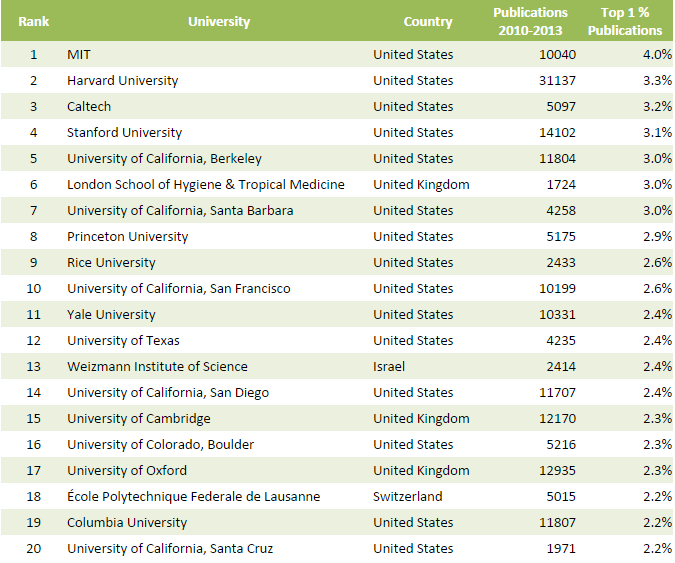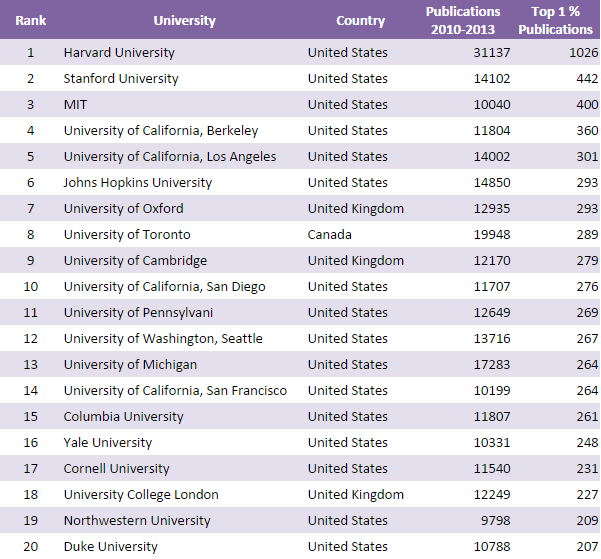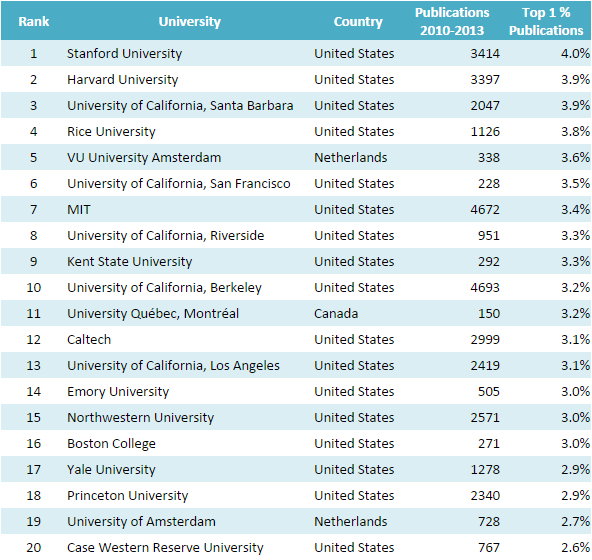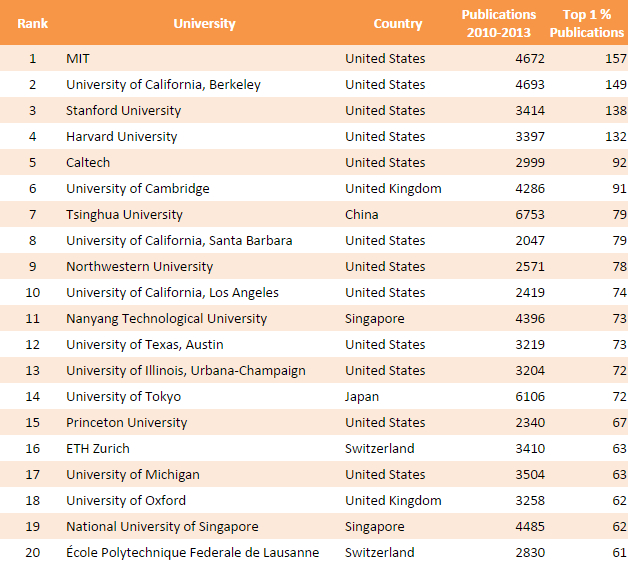The annual CWTS Leiden University Ranking for 2015 has been published by the Centre for Science and Technology Studies, Leiden University, The Netherlands. As in last year’s ranking, US institutions dominate the top 20. The highest ranked universities overall are the Massachusetts Institute of Technology (MIT), Harvard University, and the California Institute of Technology (Caltech).
The Leiden Ranking is based exclusively on bibliographic data from the Web of Science database by Thomson Reuters. The ranking provides both a size-dependent rating, which is based on the absolute number of top-cited publications, and a size-independent list, where the performance of a university does not depend on the size of its publication output.
In the physical sciences, which include chemistry and related disciplines, the top spot is occupied by the Massachusetts Institute of Technology (MIT) in the size-dependent rating. In the size-independent ranking, Stanford University, USA, is ranked at number one.
Size-Independent-Ranking (All Sciences)
(by proportion of the university’s publications belonging to the top 1 % most frequently cited)

Size-Dependent-Ranking (All Sciences)
(by the number of the university’s publications belonging to the top 1 % most frequently cited)

Size-Independent-Ranking (Physical Sciences and Engineering)
(by proportion of the university’s publications belonging to the top 1 % most frequently cited)

Size-Dependent-Ranking (Physical Sciences and Engineering)
(by the number of the university’s publications belonging to the top 1 % most frequently cited)

Methodology
The Leiden Ranking is based exclusively on bibliographic data covering the years 2010–2013 from the Web of Science database produced by Thomson Reuters. Book publications, publications in conference proceedings, and publications in journals not indexed in Web of Science are not included.
The ranking offers the following indicators of the scientific impact of a university:
- P(top 1 %) and PP(top 1 %)
The number and the proportion of a university’s publications that, compared with other publications in the same field and in the same year, belong to the top 1% most frequently cited. - P(top 10 %) and PP(top 10 %)
The number and the proportion of a university’s publications that, compared with other publications in the same field and in the same year, belong to the top 10% most frequently cited. - P(top 50 %) and PP(top 50 %)
The number and the proportion of a university’s publications that, compared with other publications in the same field and in the same year, belong to the top 50% most frequently cited. - TCS and MCS
The total and the average number of citations of the publications of a university. - TNCS and MNCS
The total and the average number of citations of the publications of a university, normalized for field and publication year. An MNCS value of two for instance means that the publications of a university have been cited twice above the average of their field and publication year.
The ranking provides statistics for the following five main fields of science:
- Biomedical and health sciences
- Life and earth sciences
- Mathematics and computer science
- Physical sciences and engineering
- Social sciences and humanities
- CWTS Leiden Ranking 2015,
Centre for Science and Technology Studies, Leiden University, The Netherlands
Also of Interest
- Times Higher Education World University Ranking,
ChemistryViews.org 2014. - Academic Ranking of World Universities 2014,
ChemistryViews.org 2014.




